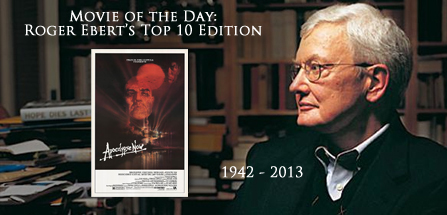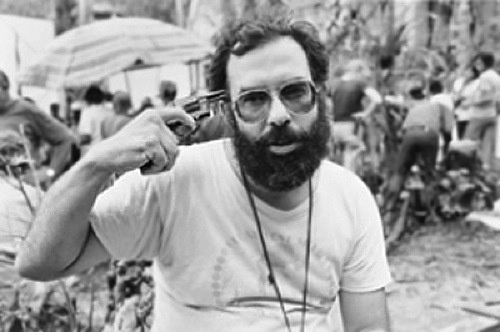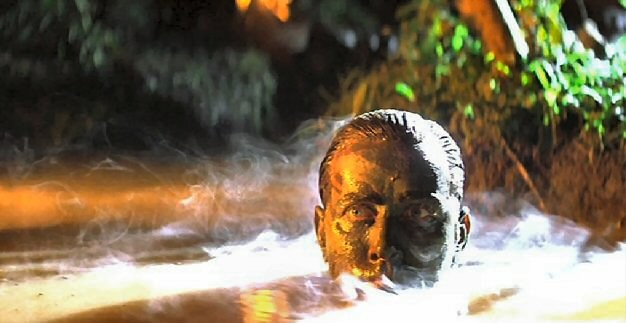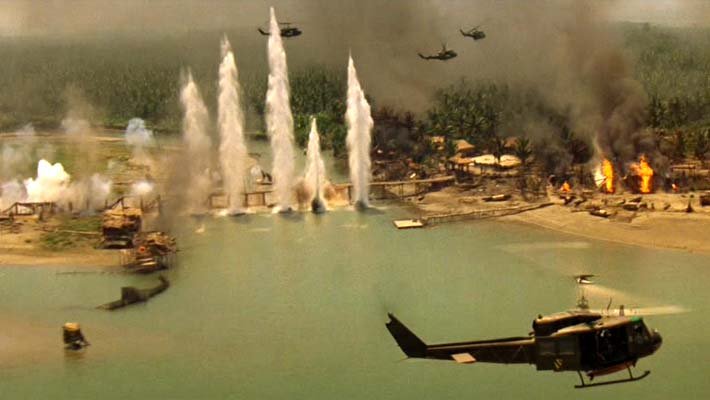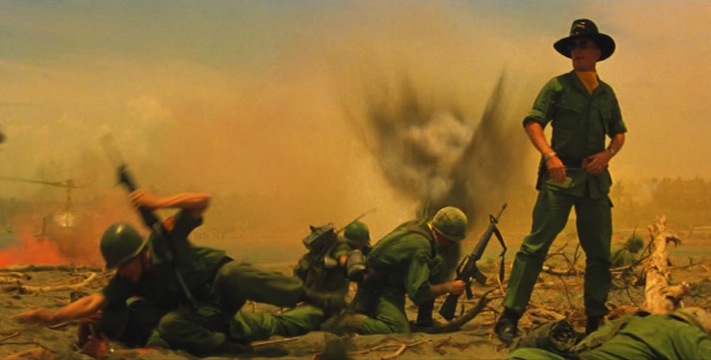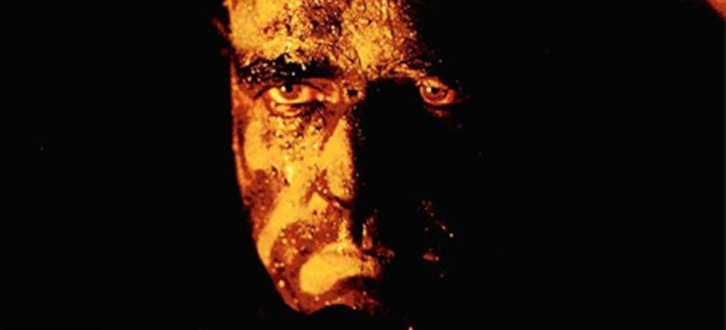The Film: Apocalypse Now
The Principles: Starring Marlon Brando, Martin Sheen, Robert Duvall, Frederic Forrest, Sam Bottoms, Laurence Fishburne, Albert Hall, Harrison Ford, Scot Glenn and Dennis Hopper. Written by John Milius and Francis Ford Coppola. Directed by Francis Ford Coppola.
The Premise: During the height of the American conflict in Vietnam, an Army Captain named Willard is sent on a classified mission to seek out a crazed Green Beret Colonel named Kurtz and relieve him of his command with “extreme prejudice.” Willard travels up the Nung river in a U.S. Navy patrol boat with a small crew along, encountering one surreal situation after another until he finally arrives at Kurtz’s nightmarish compound across the Cambodian border, where he’s taken prisoner in an attempt for the Colonel to explain the “method” of his madness.
“My movie is not about Vietnam. It IS Vietnam.” – Francis Ford Coppola at the ’79 Cannes Film Festival premiere of Apocalypse Now
Is it any good?: I consider this to be not only one of the finest Vietnam war movies ever made (and there are many), but one of the single greatest artistic statements about the insanity of war ever created. It’s also one of the best examples from this incredible era of cinema that shows the power of independent filmmaking and what can happen when an artist risks everything for his vision. If there was ever a film brave enough to show the world the ugly side of American diplomacy, then this is it. My parents took me to see it in 70mm at a theater in the suburbs of Chicago when I was eleven-years-old. I guess you could say that this was my first exposure to a war movie. Sure, I kind of half-watched the old WWII flicks with John Wayne that my dad loved, and I knew about the Korean war because of the T.V. show M.A.S.H., but the only thing I really understood about the Vietnam war at the time was that it was long and extremely unpopular. My family was never affected by it directly, but we knew of many that were. I was lucky to grow up in an era where people questioned things more and art reflected that. Some would say they were cynical times, but I look back at it now as a moment of great cultural criticism and social self-awareness. The bottom line is: war sucks and it should be shown as the ridiculous, horrifying beast it is. Francis Ford Coppola accomplishes this spectacularly and creates a film that entertains as much as it enlightens us about the darkness in all of our souls.
Apocalypse Now is a hallucinatory journey through the hellish jungles of ‘Nam, fueled by drugs and a rock n’ roll soundtrack, that keeps delving deeper and deeper into the core of man’s primordial nature with one perfectly executed scene after another. Coppola took a script from his friend John Milius, that loveable, gun-loving, macho man maverick of Conan the Barbarian and Red Dawn fame, which was a loose adaptation of Joseph Conrad’s novel Heart of Darkness, a story that many filmmakers including Orson Welles had attempted to make but failed. Milius took this as a personal challenge and wrote Apocalypse Now, but if you’ve ever read the original script you’ll know that Coppola took it to a whole other level by adding a little more conscience and thought to the material. For me, this is what makes it so monumental of an achievement and the reason why it still resonates as strongly now as it did over thirty years ago.
If you’ve ever watched the amazing documentary about the film’s anguishing production, Hearts of Darkness: A Filmmaker’s Apocalypse, you know that Coppola fretted about the film’s tone coming off either overtly macho and distasteful like an Irwin Allen production of Vietnam, or being unforgivingly pretentious by aiming higher than he could reach to find art amongst all the action-packed madness. How could he have possibly known with all of the stumbling blocks put in front of him that he was making an epic masterpiece? He had to deal with the Philippine government (under the control of the corrupt Marcos clan at the time no less), a way over budget and tremendously over scheduled production, a script that he was never completely sure about, a cast of crazy seventies method actors featuring two top dog loony icons and enfant terribles du jour – Marlon Brando and Dennis Hopper, a leading man going through an existential crisis culminating in a cathartic (and terrifying) on-set heart attack, a studio pulling the plug resulting in Coppola mortgaging his family home and completing the film with his own funds, all the while being filled with self doubt and attacked by unfair press and Hollywood rumor mongers. It had all the signs of a major critical and financial disaster that would completely destroy everything he had built up to that point, but he did it anyway! The gamble ended up paying off, but can you imagine the balls it took to actually do it? I can’t.
The production lasted from March 1976 until May 1977, so when Coppola and crew finally emerged out of the jungles of the Philippines they had a shit-ton of footage. If you’ve ever sat down to watch the six hour long Apocalypse Now: The Workprint then you know there were a great deal of scenes, moments and even some character arcs that were removed entirely from the film. Some of them were completed and put into the Apocalypse Now Redux, but much was trimmed. Well, I’ve seen all three versions and the original ’79 release is an absolutely perfect film at the 153 minute running time that legendary editor Walter Murch chopped it down to. Also, the addition of Michael Herr’s beautifully written voice over narration for Willard throughout the entire film is one of the few cases where I found this device to really help the tone. Each scene is perfectly acted, written and directed and builds a powerful momentum that culminates in the finale with Brando’s Kurtz.
One of the strongest scenes was actually improvised based on a suggestion from the cast of something they would like to film. It’s when they pull over a small Vietnamese fishing boat for inspection and it results in the poor fishermen getting gunned down over nerves and a misunderstanding. This scene was shot as a commentary on the very real My Lai Massacre, in which a platoon of Americans slaughtered an entire village of Vietcong, only to find out later that they were on the side we were supposedly fighting for. This is followed by the psychedelic Do Lung Bridge sequence, where Willard and company stop for fuel at an outpost devoid of any commanding officers, surrounded by drugged-out grunts who are trying to futilely rebuild a bridge that’s constantly under attack from the enemy.
Vittorio Storaro’s cinematography is utterly sublime. The color palate alone on this movie is ridiculously awesome. From the burnt orange glow that illuminates Willard’s meeting with the gung ho Air Cavalry commander Kilgore (played with brilliant insanity by Robert Duvall) to the Hades-gone-tropical look of Kurtz’s Cambodian compound, this is some of the best DP work ever done and it must have been an exhaustive task to accomplish. A single shot of one of the villager’s cows being lifted by net from a U.S. helicopter speaks volumes to me. The attack of the Vietnamese village so Kilgore and his boys can surf features some of the most exciting battle sequences I’ve ever seen, while also painting an image of an arrogant, oppressive U.S. military using its might to crush poor farmers so some asshole can have a little fun. Coppola added a ton of social commentary to this set piece action sequence and boy is it ever powerful.
Every member of the cast is exceptional. Martin Sheen, who replaced Harvey Keitel shortly after filming began, brings an intensity that contrasts his innocent good looks perfectly. The fact that Sheen himself was going through an extremely dark period during filming helped shape his performance I’m sure. Marlon Brando may have been a huge pain in the ass to work with, but his larger than life quality is perfect for the character of Kurtz. He also gives us little peeks at his vulnerability, which makes his fate all the more powerful emotionally. Robert Duvall delivers a napalm payload of a job with his take on Kilgore, the one character who seems to really be having a good time in ‘Nam. His “I love the smell of napalm in the morning.” monologue is one of my favorite acting moments of all time. I’d put it next to Ned Beatty’s in Network and Alec Baldwin’s in Glengarry Glen Ross. He just comes in and kills it. Rounding out the supporting players are the highly underrated Frederic Forrest as the kooky cook ‘Chef’, Sam Bottoms as the tripped out surfer Lance, Albert Hall as the underestimated boat commander Chief, a sixteen-year-old Laurence Fishburne as ‘Clean’ the cannon fodder, a baby-faced Harrison Ford in a cameo as a Colonel, Scot Glenn in a lineless role as Lt. Colby, who was given Willard’s mission but joined Kurtz instead of killing him, and last, but not least, a stoned-out-of-his-mind Dennis Hopper as a stoned-out-of-his-mind photojournalist. They’re all excellent and perfectly cast.
Is it worth a look?: Mr. Ebert wrote in his original review, “Apocalypse Now achieves greatness not by analyzing our ‘experience in Vietnam’, but by re-creating, in characters and images, something of that experience.” It’s true, Vietnam is merely the setting of the story that was adapted from another source, yet any ‘Nam vet will tell you that Coppola’s ‘Nam was exactly what it was truly like to be there. By taking us on an adventure movie quest he comments very critically on a war just by moving the audience through its landscape and allowing us to experience it the way most of the men that fought it did. If you’ve never seen it before than you simply must if you consider yourself at all a cinephile in any way. Seeing this film at an early age has made me grow into an adult that is highly critical of our American foreign policy and a total hater of war in general, except in the movies of course. This one came from an age of angry Vietnam war cinema like Platoon and Full Metal Jacket, which really shows me how times have changed because I consider the recent and current wars we fight now to be just as wrong as ‘Nam ever was, but “Hey, Hollywood! Where are the films?” As far as I’m concerned, The Hurt Locker and Zero Dark Thirty are nothing more than beautifully shot propaganda in comparison to Coppola’s masterpiece. It makes me miss that era of Easy Riders and Raging Bulls all the more. I, like the late Mr. Ebert, have it placed permanently in my all-time top ten. In my opinion, the film should have received a Nobel Prize.
Random anecdotes: George Lucas was the first filmmaker originally set to direct Apocalypse Now, which would have been shot on location in ‘Nam during the war on 16mm black & white film stock, the type used by news photographers covering the fighting that was shown on televisions across the U.S. during the time. I would love to visit an alternate universe where this version of the film exists.
There are many endings to this film. The first time I saw it there were no credits at all. When I saw it for the second time at a historic movie palace in my hometown of Park Ridge called The Pickwick Theater (which ironically was the cinema used in the opening of Siskel & Ebert’s At the Movies) the ending credits featured the legendary air strike destruction of the Kurtz compound. Every release including the Redux features the credits entirely in black. This was because Coppola felt that the air strike betrayed the message he was sending in the film’s final conclusion. Apparently, there was one ending that was shot where Willard replaces Kurtz as leader of his army.
In Apocalypse Now: The Workprint (which was released bootleg-style on VHS sometime in the mid-nineties) there are many, many scenes that were removed from the original and they’re not in the Redux, including one where Scot Glen’s Colby kills Dennis Hopper’s character for taking Kurtz’s photo, only to be killed by Martin Sheen with a throwing knife. Colby’s dying words to Willard are, “Kill Kurtz!” It’s insane. Also, the conclusion replaces the song “The End” by The Doors with another one of their tunes called “When the Music’s Over” and features a sequence in which Willard eliminates all of Kurtz’s bodyguards outside the compound Rambo-style. There is one particularly graphic shot of Sheen in a kill frenzy spearing both a green beret and a Vietnamese baby simultaneously, which the soldier uses as a human shield. It’s unbelievably shocking and I can understand why it was removed in the final cut because you really change the way you view the character of Willard.
Cinematic soul mates: Hearts of Darkness: A Filmmaker’s Apocalypse, Apocalypse Now: The Workprint, Apocalypse Now Redux, The Boys in Company C, The Deer Hunter, Platoon, Full Metal Jacket, Hamburger Hill and Casualties of War.
